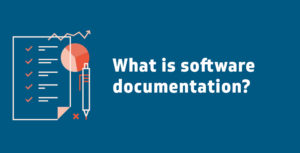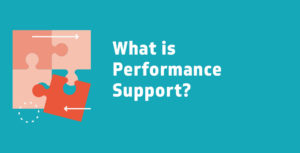A guest article by Bernd Binzenbach
There is no question that orientation in today’s dynamic and complex business world is becoming increasingly difficult. Corporate learning is no exception: agile, efficient, close to the workplace, self-directed and of course digital – these are just some of the demands that corporate learning faces. A compass for business learning would be helpful, which steers through the ocean of change – especially against the background of constantly new emerging trends and technical promises.
The US-Americans Gottfredson and Mosher created with the “5 Moments of Need” a simple model that (among others) is capable of providing such a compass. As the core of the model, the two have identified five different contexts in which workplace learning mainly takes place. This offers an important orientation for providing and combining the right learning formats for the respective purpose.
What do these five different occasions for in-company learning look like, for example in relation to software? And what does software documentation like FlowShare has to do with them?
The „5 Moments of Need“
- Learning something completely new
- Applying something
- Solving a problem
- Something changes
- Learn more about something

1. Learning something completely new
This is about the critical points for success. The goal is not “learning on stock” in the form of a flood of functions, but orientation and the acquisition of basic processes.
A practical example is the “onboarding” of employees: With FlowShare, uniform instructions can be created click by click in no time at all, which even employees without special computer knowledge can understand.
Thus, learning and practice merge, classical trainings can often be considerably shortened or completely replaced – by such step-by-step instructions, tutorials, webinars, accompanying communication. The prerequisite is that such aids are provided at the time of practical application (see also point 2). And of course, aspects such as the questions of relevance and added value must not be forgotten.
2. Applying something
In addition to basic prior knowledge, it is crucial to support the users directly in their everyday life, at the moment of application (“on demand”), when things get serious. It is almost impossible to learn the variety of options and processes within a software in stock for the case of emergency. Especially when individual functionalities are only seldomly used.
As mentioned above, this is where FlowShare shows its strengths: Step-by-step instructions, use cases, process aids, “how-to” guides, sample examples or templates are created in no time and without any special previous knowledge. In the form of a wiki, for example, a whole collection of use cases can easily be created, which can be used and even maintained independently by all employees – knowledge exchange par excellence.
3. Solving a problem
In fact, this is a special case of “applying”: users need support especially when an unexpected problem occurs and their productivity is threatened.
Accordingly, the use of FlowShare including examples can be easily transferred from the application (point 2) to this point. But a very special added value should not remain unmentioned: the so-called “Augmented Workflow”. Based on the data from FlowShare, miraminds’ second application FlowGuide guides users directly in the relevant software (e.g. SAP) through the process and indicates step by step what needs to be done.
Independent of this, additional help such as contact details of experts or the helpdesk, a community of practice or “Frequently Asked Questions” (FAQs) can provide support.
4. Something changes
In this case it is crucial – assuming the appropriate prior knowledge – to provide precise information about modified versions, functions or processes.
These targeted updates can also be created and published again in the form of step-by-step instructions, use cases, process aids, “how-to” guides, sample examples or templates using FlowShare, or stored directly in the relevant software using FlowGuide.
5. Learn more about something
This requires breadth and depth, specialist knowledge and special functions, the ability to deal with unique challenges and background information. Often the desire to learn more is associated with the wish for an expert status.
Typical learning formats are: Intensive courses (face-to-face, online), digital self-study programs or courses, videos, books, support by mentors and experts, tips & tricks. FlowShare plays a special role here, when prospective experts not only learn on the basis of special use cases, but create them themselves using FlowShare and make them available to users.
What are the potentials of the model?
The “5 Moments of Need” help to select learning formats that are appropriate for the respective learning context and to limit the effort to exactly the right level. They promote a more differentiated view of the target group(s): Newcomers to a field require different, more extensive learning offers than “old hands” who may be faced with a few innovations.
But the greatest value is certainly that everything revolves around practical application. Thus a frequent point of criticism of traditional professional training is taken up: Participants fall back relatively quickly to their original level of competence after formal learning measures if what has been learned is not applied: the “forgetting curve” occurs. By extending or shifting learning to work processes, the competence level can be increased in the long term, which is why this model is often referred to as “performance support”. In addition, formal learning measures can be significantly ” slimmed down ” by concentrating on the points critical to success.
In this respect, the “5 Moments of Need” are in fact a kind of compass that helps to better understand and optimally design corporate learning. The model is by no means limited to the IT sector, but can be transferred to any content. And it offers an additional advantage not to be underestimated: The implementation is possible with the simplest means, as the use of FlowShare shows. Give it a try!
About the author:
Bernd Binzenbach Bernd Binzenbach holds a master’s degree in eEducation and has been working in the field of Learning & Development for over 20 years. He shares his experience from leading positions in global companies through development programs, workshops and concept and strategy consulting – and has a special passion: to maximize the effectiveness of education. Especially the reflective use of digital learning formats plays an important role for him.
Contact: LinkedIn profile of Bernd Binzenbach and Twitter profile (@binzenbach1)




